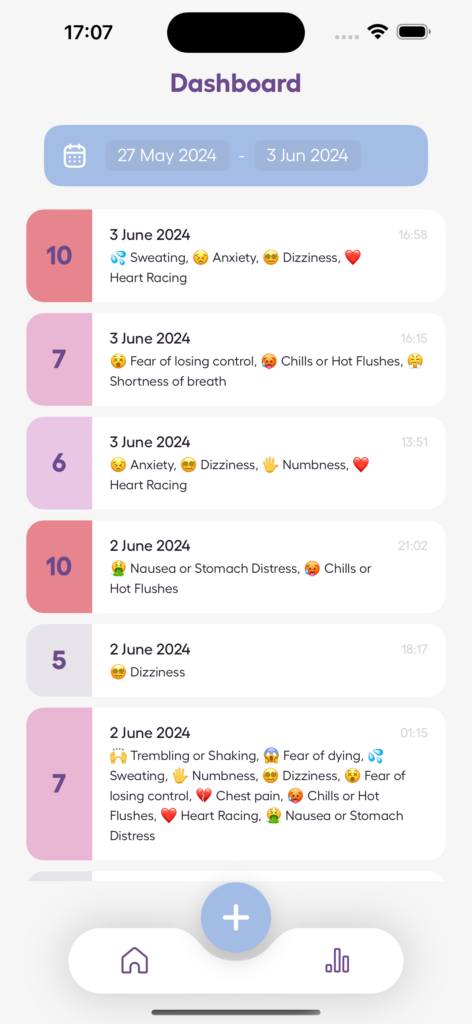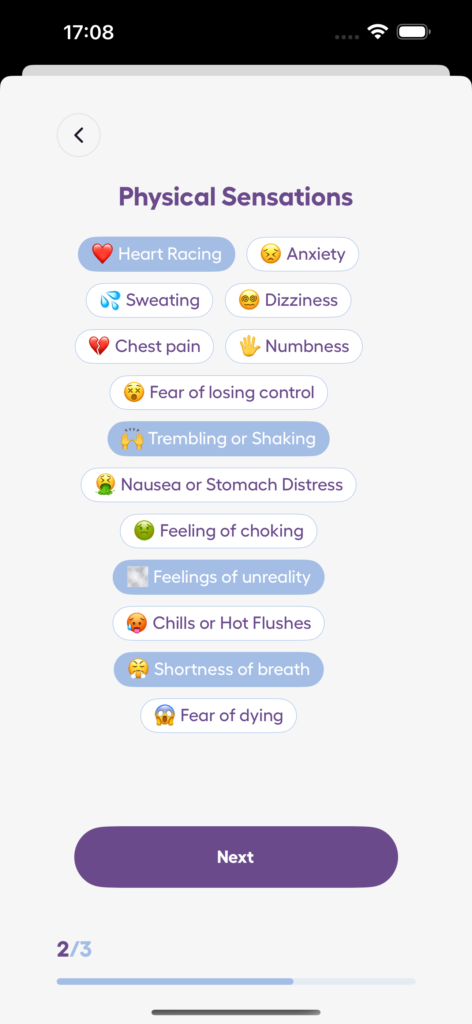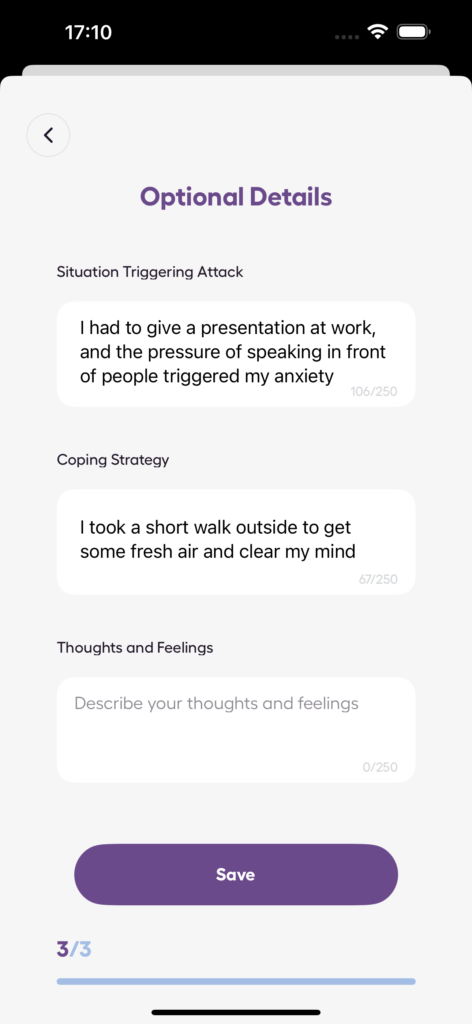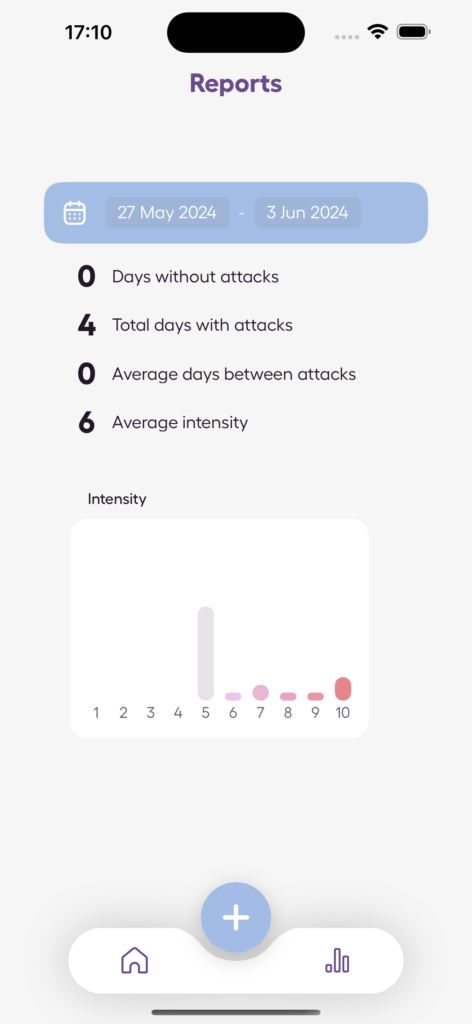Grief can lead to overwhelming anxiety, but self-compassion and mindfulness can help. Here’s how:
- Self-Compassion: Treat yourself with kindness, recognize that suffering is part of being human, and observe emotions without judgment.
- Mindfulness Techniques: Use simple practices like breathing exercises (e.g., 4-4-4-4 technique) to stay present and calm.
- Daily Routines: Build supportive habits like journaling, light physical activity, and relaxation techniques to manage anxiety.
Tools like the Anxiety Journal app can help track emotions, identify triggers, and improve coping strategies. Healing takes time – be patient and gentle with yourself.
A Meditation for Anxiety and Suicidal Thoughts During Grief w …
How Grief and Self-Compassion Work Together
When grief and anxiety collide, the result can be an overwhelming mix of emotions. Below, we’ll explore common anxiety symptoms that surface during grief and how self-compassion can help ease them.
Common Anxiety Symptoms During Grief
Grief often brings anxiety, which can show up in both physical and emotional ways. Physical symptoms might include:
- A racing heartbeat or chest tightness
- Trouble breathing
- Muscle tension, especially in the neck and shoulders
- Difficulty sleeping
- Digestive problems
Emotionally, anxiety during grief may look like:
- Constant worry
- Repeated thoughts about your loss
- Fear of losing others
- Trouble focusing
- Feeling extra sensitive to emotions
Using self-compassion can help interrupt this cycle of anxiety and grief.
Understanding Self-Compassion
Self-compassion is a helpful way to manage anxiety tied to grief. It involves three key elements:
-
Self-Kindness
Be as kind to yourself as you would to a close friend. Accept that feelings like sadness and anxiety are natural parts of the grieving process. -
Recognizing Shared Humanity
Remind yourself that grief and anxiety are experiences everyone faces at some point. Knowing you’re not alone can ease feelings of isolation. -
Mindful Awareness
Focus on your emotions without judgment. A simple breathing exercise can help you stay grounded during moments of intense anxiety.
Paying attention to your anxiety patterns can make your self-compassion practice more effective. Tracking symptoms may reveal triggers, allowing you to adjust your approach as needed.
Healing isn’t a straight path, and it’s okay to have tough days. What matters is treating yourself with patience and understanding as you work through grief. This mindset lays the foundation for mindfulness techniques that can further help with anxiety.
sbb-itb-b1dedcc
3 Key Mindfulness Methods for Grief Anxiety
Mindfulness techniques can help ease grief-related anxiety by keeping you grounded and aware of your emotions. These methods give you practical ways to navigate overwhelming moments.
Basic Breathing Meditation
Box breathing is a simple technique to calm your mind during moments of heightened anxiety:
- Breathe in through your nose for 4 counts.
- Hold your breath for 4 counts.
- Slowly exhale through your mouth for 4 counts.
- Pause for 4 counts before starting again.
Begin with just 2-3 minutes and gradually extend the time as you get more comfortable with the practice.
Quick Self-Compassion Exercises
When anxiety surfaces, take a moment to pause and breathe deeply. Acknowledge your feelings without judgment and remind yourself that it’s okay to feel this way. This brief exercise encourages a gentler, more understanding approach toward your emotions.
Loving-Kindness Practice
Spend a few minutes silently repeating these affirmations to yourself:
"May I be safe. May I be peaceful. May I be gentle with myself. May I accept this moment as it is."
Practicing this for about 5 minutes each day – whether in the morning or during stressful times – can help you embrace a sense of calm and acceptance.
These mindfulness methods provide simple yet effective tools to ease anxiety and support emotional healing during grief.
Daily Self-Compassion and Mindfulness Steps
Acknowledge Your Emotions Without Judgment
Grieving can bring up intense emotions, and it’s important to let yourself feel them without self-criticism. When anxiety arises, take a moment to notice it. Don’t try to change or suppress it – just recognize that emotions are temporary and will eventually pass.
Spend 5–10 minutes each day sitting quietly and paying attention to your thoughts and feelings. If anxiety pops up, observe it with kindness instead of resisting it. Over time, this practice can help build emotional strength. You can also jot down your reflections to better understand your experiences.
Keep a Journal of Your Feelings
Track your emotional experiences using tools like the Anxiety Journal app. This can help you notice patterns and develop personalized strategies for coping. When journaling, consider including:
- What physical sensations you experienced
- The triggers and emotions tied to the moment
- Techniques that helped you manage the situation
Pairing journaling with consistent daily practices can strengthen your ability to handle difficult emotions.
Build Supportive Daily Routines
Creating simple, steady habits can bring balance to your day. Try incorporating these:
- Morning: Spend 5 minutes doing breathing exercises or gentle stretches.
- Meals: Stick to regular meal times to keep your energy steady.
- Movement: Take short walks or do light physical activities during breaks.
- Evening: Wind down with relaxing activities like reading or listening to calming music.
Tracking these habits with tools like the Anxiety Journal app can help you figure out which routines are most effective for easing grief-related anxiety.
Moving Forward with Self-Compassion
Key Takeaways
Pairing self-compassion with mindfulness creates a solid path for managing grief-related anxiety. Be kind to yourself as you move through this process – it’s normal for progress to look different every day.
Here are a few ways to stay grounded during challenging times:
- Take slow, intentional breaths
- Stay present by practicing mindful awareness
- Show yourself the same kindness you’d offer to a close friend
- Use your daily routines to create a sense of stability
These techniques align with the mindfulness and self-compassion practices discussed earlier. Keeping track of your progress can enhance the impact of these methods.
Tools to Track Your Progress
Sticking with these self-compassion practices over time can help you see real progress. To make this easier, tools like the Anxiety Journal app offer features designed to support your journey.
What the app offers:
- Log anxiety levels and panic episodes
- Track symptoms and note which coping strategies work best
- Take anxiety assessments to measure improvement
With AI-driven insights, the app highlights patterns and triggers, giving you a clearer picture of your emotional landscape. By combining consistent self-compassion practices with tracking, you’ll better understand your emotions and strengthen your ability to cope.
Progress often happens in small, steady steps. Keeping tabs on your journey helps reinforce these self-compassion strategies, giving you the tools to build resilience moving forward.









